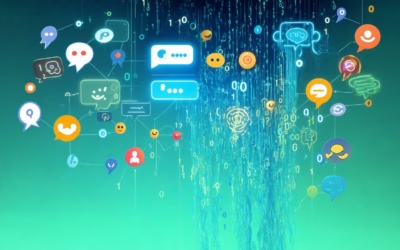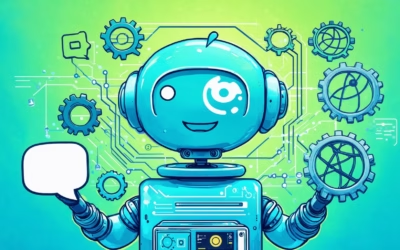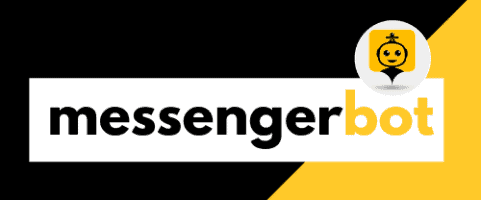In the ever-evolving landscape of customer service, knowledge base chatbots have emerged as game-changers, revolutionizing how businesses interact with their clients. These AI-powered assistants leverage robust knowledge databases and cutting-edge natural language processing to provide instant, accurate support. As companies seek to enhance their customer experience while optimizing resources, understanding the intricacies of knowledge base chatbots becomes crucial. From exploring the various types of chatbots to implementing advanced AI knowledge base solutions, this article delves into the transformative power of these digital helpers. Whether you’re looking to create an AI knowledge base from scratch or integrate chatbots with existing platforms, we’ll guide you through the essentials of mastering AI support and elevating your customer service to new heights.
I. Understanding Knowledge Base Chatbots
In today’s fast-paced digital landscape, businesses are constantly seeking innovative ways to enhance customer support and streamline information delivery. Enter the knowledge base chatbot – a game-changing solution that’s revolutionizing how we interact with information and support systems.
A. What is a knowledge base chatbot?
A knowledge base chatbot is an advanced AI-powered conversational system designed to provide instant, accurate responses to user queries by leveraging a comprehensive database of information. This intelligent virtual assistant combines natural language processing (NLP) capabilities with a structured repository of data, enabling it to understand and interpret user questions, and deliver relevant, context-aware answers.
The core of a knowledge base chatbot is its extensive library of information, which typically includes:
- Frequently Asked Questions (FAQs)
- Product specifications and technical details
- Company policies and procedures
- Terms and conditions
- Troubleshooting guides
- How-to articles and tutorials
By integrating machine learning algorithms, these chatbots continuously improve their performance, learning from user interactions to refine their responses and expand their knowledge base. This self-learning capability ensures that the chatbot becomes increasingly efficient and accurate over time.
Key benefits of knowledge base chatbots include:
- 24/7 availability for customer support
- Consistent and accurate information delivery
- Reduced response times and improved customer satisfaction
- Scalability to handle multiple queries simultaneously
- Cost-effective alternative to human customer service representatives
Recent advancements in AI technology have further enhanced knowledge base chatbots, enabling them to understand context, sentiment, and even complex, multi-turn conversations. According to a study by Gartner, by 2022, 70% of customer interactions will involve emerging technologies such as machine learning applications, chatbots, and mobile messaging, up from 15% in 2018.
Implementing a knowledge base chatbot can significantly improve customer support efficiency. Research by IBM suggests that chatbots can answer up to 80% of routine questions, freeing up human agents to focus on more complex issues. Additionally, a report by Juniper Research predicts that by 2023, the adoption of chatbots across the retail, banking, and healthcare sectors will save businesses $11 billion annually.
At Messenger Bot, we’ve harnessed the power of knowledge base chatbots to provide our clients with cutting-edge customer support solutions. Our AI-driven platform seamlessly integrates with existing knowledge bases, enabling businesses to deliver instant, accurate responses to customer inquiries across multiple channels.
B. Evolution of customer service AI
The journey of customer service AI has been nothing short of remarkable. From simple rule-based systems to sophisticated, context-aware chatbots, the evolution has been driven by advancements in artificial intelligence, machine learning, and natural language processing.
In the early days, customer service automation was limited to basic interactive voice response (IVR) systems and simplistic chatbots that could only handle predefined queries. These systems often left customers frustrated due to their inability to understand context or handle complex inquiries.
The advent of machine learning and natural language processing marked a significant turning point. Suddenly, chatbots could understand the nuances of human language, interpret context, and learn from interactions. This led to the development of more sophisticated knowledge base chatbots that could access vast repositories of information and provide accurate, contextually relevant responses.
Today, we’re witnessing the rise of AI-powered customer service solutions that can handle multi-turn conversations, understand sentiment, and even anticipate customer needs. Platforms like Brain Pod AI are at the forefront of this revolution, offering advanced AI writing and conversation capabilities that can be seamlessly integrated into customer service workflows.
The future of customer service AI looks even more promising. With the integration of technologies like voice recognition, emotion detection, and predictive analytics, knowledge base chatbots are set to become even more human-like and intuitive. As these systems continue to evolve, they’ll play an increasingly central role in shaping customer experiences and driving business efficiency.
At Messenger Bot, we’re committed to staying at the cutting edge of this evolution. Our AI-powered features are constantly being updated to incorporate the latest advancements in customer service AI, ensuring that our clients always have access to the most effective and efficient support tools available.

II. The Foundation of AI-Powered Support
At Messenger Bot, we understand that the backbone of any effective AI-powered support system is a robust knowledge base. This foundation is what enables our chatbots to provide accurate, timely, and contextually relevant responses to user queries, significantly enhancing the customer support experience.
A. What is the knowledge base in AI?
The knowledge base in AI is a sophisticated repository of structured and unstructured data, facts, rules, and relationships that serves as the foundation for intelligent decision-making and problem-solving capabilities. Unlike traditional databases, AI knowledge bases leverage advanced natural language processing (NLP) and machine learning (ML) algorithms to dynamically organize, update, and retrieve information.
Key components of an AI knowledge base include:
- Ontologies: Formal representations of domain-specific concepts and their interrelationships.
- Semantic networks: Graphical representations of knowledge that capture relationships between entities.
- Rule-based systems: Logical frameworks that define conditional statements for reasoning.
- Machine learning models: Algorithms that continuously learn and improve from new data inputs.
- Natural language understanding: Capabilities to interpret and process human language queries.
AI knowledge bases offer several advantages over traditional systems:
- Automated content generation and curation
- Contextual understanding and intelligent information retrieval
- Adaptive learning and self-improvement
- Integration of multiple data sources and formats
- Real-time updates and scalability
At Messenger Bot, we harness these advantages to create a powerful, dynamic knowledge base that forms the core of our AI-powered support solutions. This enables us to provide our clients with chatbots that can handle complex queries, learn from interactions, and deliver increasingly accurate responses over time.
The applications of AI knowledge bases span various industries, including healthcare, finance, customer service, legal, and manufacturing. In the realm of customer support, which is our primary focus at Messenger Bot, AI knowledge bases power intelligent chatbots and virtual assistants that can handle a wide range of customer inquiries efficiently and accurately.
Recent advancements in AI knowledge bases, such as Explainable AI (XAI), knowledge graph technologies, federated learning, and multimodal AI, are further enhancing the capabilities of these systems. At Messenger Bot, we’re continuously integrating these cutting-edge technologies into our platform features to ensure our clients have access to the most advanced AI-powered support tools available.
B. Components of a robust knowledge database
A robust knowledge database is crucial for the effectiveness of any AI-powered support system. At Messenger Bot, we’ve identified and implemented several key components that make our knowledge base exceptionally powerful and versatile:
- Comprehensive Data Collection: Our knowledge base incorporates a wide range of data sources, including FAQs, product manuals, customer interactions, and industry-specific information. This ensures that our chatbots can address a diverse array of customer queries.
- Intelligent Categorization: We employ advanced machine learning algorithms to categorize and tag information, making it easier for our AI to quickly retrieve relevant data when responding to customer inquiries.
- Natural Language Processing (NLP): Our system uses state-of-the-art NLP techniques to understand the context and intent behind customer queries, allowing for more accurate and nuanced responses.
- Continuous Learning Mechanisms: We’ve implemented machine learning models that continuously learn from new interactions, improving the knowledge base’s accuracy and relevance over time.
- Multi-format Support: Our knowledge base can handle various data formats, including text, images, videos, and audio, providing a rich and comprehensive source of information for our AI chatbots.
- Integration Capabilities: The knowledge base is designed to integrate seamlessly with various platforms and systems, ensuring that our chatbots can access real-time information from multiple sources.
- Scalability: Our infrastructure is built to handle growing volumes of data and increasing numbers of simultaneous queries, ensuring consistent performance as your business expands.
- Security and Compliance: We implement robust security measures to protect sensitive information, and our systems are designed to comply with relevant data protection regulations.
These components work together to create a knowledge base that’s not just a repository of information, but a dynamic, intelligent system that forms the core of our AI-powered support solutions. This robust foundation enables our chatbots to provide accurate, contextually relevant responses, significantly enhancing the customer support experience.
For businesses looking to implement AI-powered support systems, platforms like Brain Pod AI offer advanced AI writing and conversation capabilities that can be integrated into existing knowledge bases. This can further enhance the ability of chatbots to generate human-like responses and handle complex customer interactions.
At Messenger Bot, we’re committed to continuously refining and expanding our knowledge base components. This ongoing improvement ensures that our clients always have access to cutting-edge AI support tools that can effectively meet the evolving needs of their customers. To learn more about how our robust knowledge base can transform your customer support, check out our tutorials or sign up for a free trial today.
III. Natural Language Processing in Chatbots
At Messenger Bot, we harness the power of Natural Language Processing (NLP) to create chatbots that revolutionize customer interactions. NLP is the cornerstone of our AI-driven approach, enabling our chatbots to understand, interpret, and respond to human language in a natural, context-aware manner.
A. What is NLP based chatbot?
An NLP-based chatbot is an advanced conversational AI system that leverages computational linguistics and machine learning algorithms to engage in human-like interactions. Unlike traditional rule-based chatbots, our NLP-powered solutions can comprehend complex queries, detect user intent, and provide nuanced responses that feel natural and personalized.
Key features of our NLP-based chatbots include:
- Language Understanding: Our chatbots can process and interpret various languages, dialects, and colloquialisms, making them ideal for businesses with a global customer base.
- Context Awareness: By maintaining conversation history, our chatbots provide contextually relevant responses, ensuring a coherent and meaningful dialogue.
- Sentiment Analysis: Our AI can detect user emotions and adjust responses accordingly, enhancing the overall customer experience.
- Entity Recognition: Our chatbots excel at identifying and extracting key information from user inputs, allowing for more precise and helpful responses.
- Intent Classification: We’ve fine-tuned our AI to accurately determine the user’s purpose or goal in a conversation, enabling more effective problem-solving.
The benefits of implementing our NLP chatbots are significant:
- Enhanced Customer Experience: Our chatbots provide more natural, personalized interactions, leading to higher customer satisfaction.
- Increased Efficiency: By handling complex queries without human intervention, our NLP chatbots significantly reduce response times and operational costs.
- Scalability: Our solutions can manage multiple conversations simultaneously, allowing your business to grow without compromising on service quality.
- Continuous Learning: Through machine learning, our chatbots improve over time, becoming more adept at handling diverse customer inquiries.
- Multilingual Support: Our NLP chatbots can communicate in various languages, breaking down language barriers and expanding your global reach.
We’ve successfully implemented our NLP-based chatbots across various industries, including e-commerce, healthcare, and finance. For instance, our chatbots have assisted healthcare providers with symptom checking and appointment scheduling, while in the financial sector, they’ve been instrumental in providing personalized financial advice and detecting potential fraud.
Recent advancements in NLP, such as transformer models like GPT-3, have significantly improved our chatbot capabilities. These developments have enabled us to create chatbots that can engage in more sophisticated tasks, including content creation, code generation, and complex problem-solving. As we continue to integrate these cutting-edge technologies, our clients benefit from chatbots that are at the forefront of AI innovation.
To experience the power of our NLP-based chatbots firsthand, we invite you to sign up for a free trial. Discover how our advanced AI solutions can transform your customer interactions and drive your business forward.
B. Enhancing user interactions with NLP
At Messenger Bot, we’re constantly pushing the boundaries of what’s possible with NLP to enhance user interactions. Our NLP-powered chatbots go beyond simple keyword matching to truly understand the context and intent behind user queries, resulting in more meaningful and productive conversations.
Here’s how we leverage NLP to enhance user interactions:
- Contextual Understanding: Our chatbots can maintain context throughout a conversation, remembering previous interactions to provide more relevant and personalized responses. This creates a more natural flow of conversation, similar to speaking with a human agent.
- Intent Recognition: We’ve trained our AI to accurately identify the user’s intent, even when it’s not explicitly stated. This allows our chatbots to provide appropriate responses and take relevant actions, improving the overall user experience.
- Entity Extraction: Our NLP algorithms can identify and extract key information from user inputs, such as dates, locations, or product names. This capability enables our chatbots to gather necessary details efficiently without asking repetitive questions.
- Sentiment Analysis: By analyzing the tone and emotion in user messages, our chatbots can adjust their responses accordingly. For instance, they can escalate to a human agent if they detect frustration or provide more empathetic responses when appropriate.
- Language Generation: We use advanced language models to generate human-like responses that are contextually appropriate and grammatically correct. This ensures that interactions with our chatbots feel natural and engaging.
- Multilingual Support: Our NLP capabilities extend across multiple languages, allowing businesses to provide seamless support to a global customer base without the need for separate chatbots for each language.
- Continuous Learning: We’ve implemented machine learning algorithms that allow our chatbots to learn from each interaction, continuously improving their performance over time.
These NLP enhancements result in several tangible benefits for businesses:
- Improved Customer Satisfaction: By providing more accurate and contextually relevant responses, our chatbots significantly enhance the customer experience.
- Increased Efficiency: Our NLP-powered chatbots can handle a wider range of queries without human intervention, freeing up your staff to focus on more complex tasks.
- Deeper Insights: The advanced language understanding capabilities of our chatbots allow for better data collection and analysis, providing valuable insights into customer needs and preferences.
- Scalability: As your business grows, our NLP chatbots can easily scale to handle increased volume without compromising on quality.
We’re not alone in recognizing the power of NLP in chatbots. Other platforms like Brain Pod AI also offer advanced AI writing and conversation capabilities that can enhance chatbot interactions. However, at Messenger Bot, we pride ourselves on our unique approach to NLP implementation, which is tailored specifically for customer service and engagement scenarios.
To see how our NLP-enhanced chatbots can transform your customer interactions, we invite you to explore our feature set or start a free trial today. Experience firsthand how our advanced NLP technology can elevate your customer service to new heights, providing a level of interaction that sets your business apart in today’s competitive landscape.
IV. Cutting-Edge AI Chatbot Technology
At Messenger Bot, we’re constantly pushing the boundaries of AI chatbot technology to deliver cutting-edge solutions for our clients. Our commitment to innovation ensures that we stay at the forefront of the rapidly evolving field of conversational AI.
A. What is the most advanced artificial intelligence chatbot?
While we pride ourselves on our advanced AI capabilities, it’s important to acknowledge the broader landscape of AI chatbot technology. Currently, GPT-4, developed by OpenAI, is widely recognized as the most advanced artificial intelligence chatbot. This large language model has set new benchmarks in natural language understanding, generation, and problem-solving across various domains.
Key features of GPT-4 include:
- Multimodal capabilities, processing both text and images
- Improved context understanding with a 32,000 token capacity
- Enhanced reasoning abilities across various fields
- Reduced hallucinations and fewer factual errors
- Improved ethical safeguards
Other notable advanced AI chatbots in the field include Google’s LaMDA, Anthropic’s Claude, and DeepMind’s Sparrow. These models continue to push the boundaries of AI capabilities, driving ongoing research and development in performance, safety, and ethical use.
At Messenger Bot, we leverage the latest advancements in AI technology to enhance our chatbot solutions. While we may not use GPT-4 directly, we incorporate similar advanced techniques to ensure our chatbots deliver exceptional performance. Our AI-powered chatbots are designed to understand context, provide accurate responses, and engage in meaningful conversations across various industries.
We continuously update our AI models to incorporate the latest breakthroughs in natural language processing and machine learning. This commitment to innovation allows us to offer chatbot solutions that rival the capabilities of the most advanced AI systems while being tailored specifically for customer service and engagement scenarios.
B. Innovations in knowledge base software
At Messenger Bot, we’re not just keeping pace with innovations in knowledge base software; we’re actively driving them. Our cutting-edge approach to knowledge management is revolutionizing how businesses interact with their customers and manage information.
Here are some of the key innovations we’ve implemented in our knowledge base software:
- AI-Powered Content Generation: We’ve integrated advanced AI algorithms that can automatically generate and update knowledge base content. This ensures that your knowledge base stays current with minimal human intervention.
- Dynamic Content Structuring: Our software uses machine learning to analyze user queries and automatically restructure content for optimal accessibility. This means your knowledge base evolves to meet user needs in real-time.
- Semantic Search Capabilities: We’ve implemented advanced semantic search algorithms that understand the intent behind user queries, not just keywords. This dramatically improves the accuracy and relevance of search results.
- Personalized User Experiences: Our knowledge base software learns from user interactions to provide personalized content recommendations, creating a more engaging and efficient user experience.
- Multilingual Support: We’ve developed sophisticated translation capabilities that allow for seamless multilingual knowledge bases, breaking down language barriers for global businesses.
- Integration with Chatbots: Our knowledge base software seamlessly integrates with our AI chatbots, creating a powerful synergy that enhances both customer service and self-service capabilities.
- Analytics and Insights: We’ve developed advanced analytics tools that provide deep insights into user behavior, content performance, and knowledge gaps, allowing for data-driven improvements to your knowledge base.
These innovations are not just theoretical – they’re actively improving customer experiences and operational efficiencies for our clients. For example, one of our e-commerce clients saw a 40% reduction in support tickets after implementing our AI-powered knowledge base, while a tech company improved their customer satisfaction scores by 25% through personalized content delivery.
While other platforms like Brain Pod AI offer impressive AI writing capabilities, our focus on integrating advanced knowledge base functionalities with chatbot technology sets us apart. This unique approach allows us to offer a comprehensive solution that not only provides information but also engages users in meaningful, context-aware conversations.
We’re constantly exploring new frontiers in knowledge base technology. Some areas we’re currently developing include:
- Augmented Reality (AR) integration for visual knowledge bases
- Predictive content generation based on anticipated user needs
- Blockchain-based knowledge verification for enhanced accuracy and trust
- Emotion-aware content delivery that adapts to user sentiment
These innovations are part of our commitment to providing the most advanced, user-friendly, and effective knowledge base solutions on the market. By choosing Messenger Bot, you’re not just getting a product – you’re partnering with a leader in AI-driven knowledge management innovation.
Ready to revolutionize your knowledge base and customer interactions? Start your free trial today and experience the future of AI-powered knowledge management firsthand.

V. Diverse Chatbot Solutions
At Messenger Bot, we understand that one size doesn’t fit all when it comes to chatbot solutions. Our diverse range of AI-powered chatbots is designed to meet the unique needs of various businesses and industries. Let’s explore the different types of chatbots and how they can enhance your knowledge base and customer engagement strategies.
A. What are the 4 types of chatbots?
We offer four main types of chatbots, each with its own strengths and applications:
- Rule-Based Chatbots: These are our simplest yet highly effective chatbots. They follow predefined scripts and decision trees, making them perfect for handling routine inquiries and frequently asked questions. While they may not handle complex queries, they’re excellent for quickly addressing common customer concerns and reducing the workload on your support team.
- AI-Powered Chatbots: This is where our cutting-edge technology truly shines. Our AI-powered chatbots utilize advanced machine learning and natural language processing to understand context and intent. They learn and improve over time, providing personalized recommendations and acting as virtual assistants. These chatbots are available 24/7 and can scale effortlessly to meet demand.
- Hybrid Chatbots: Combining the best of both worlds, our hybrid chatbots merge rule-based simplicity with AI sophistication. They’re particularly effective in complex industries like e-commerce, healthcare, and finance. One of their key advantages is the ability to seamlessly escalate to human agents when needed, ensuring your customers always receive the best possible support.
- Voice-Activated Chatbots: As voice technology continues to grow, so does the demand for voice-activated chatbots. These chatbots respond to spoken commands and queries, integrating seamlessly with smart speakers and mobile devices. They’re perfect for hands-free assistance and home automation applications.
Each of these chatbot types offers unique benefits, catering to diverse business needs and user preferences. By implementing the right chatbot solution, you can significantly enhance customer experience, reduce operational costs, and drive engagement across various touchpoints.
For instance, one of our e-commerce clients saw a 30% reduction in customer service inquiries after implementing our hybrid chatbot solution. The chatbot was able to handle routine questions about order status and returns, while seamlessly handing off more complex issues to human agents.
Similarly, a healthcare provider using our AI-powered chatbot reported a 40% increase in patient engagement, with the chatbot providing personalized health tips and appointment reminders.
B. Choosing the right chatbot for your knowledge base
Selecting the ideal chatbot for your knowledge base is crucial for maximizing efficiency and user satisfaction. At Messenger Bot, we guide you through this process, ensuring you choose a solution that aligns perfectly with your business goals and customer needs.
Here are some key factors to consider when selecting a chatbot for your knowledge base:
- Complexity of Information: If your knowledge base contains straightforward, frequently accessed information, a rule-based chatbot might be sufficient. However, for more complex, interconnected data, an AI-powered or hybrid chatbot would be more suitable.
- User Demographics: Consider your target audience. If they’re tech-savvy and prefer quick, automated responses, an AI chatbot might be ideal. For audiences that may need more guidance, a hybrid chatbot with easy escalation to human support could be better.
- Integration Requirements: Assess how well the chatbot can integrate with your existing knowledge base and other systems. Our chatbots are designed for seamless integration, enhancing rather than disrupting your current setup.
- Scalability: As your business grows, your chatbot should be able to handle increased loads. Our AI-powered chatbots are particularly adept at scaling to meet growing demand.
- Customization Needs: Consider how much you need to tailor the chatbot’s responses and personality to your brand. Our chatbots offer extensive customization options to ensure they align perfectly with your brand voice.
- Multilingual Support: If you serve a global audience, consider a chatbot with strong multilingual capabilities. Our AI-powered chatbots excel in this area, providing natural, context-aware translations.
- Analytics and Improvement: Look for chatbots that offer robust analytics. This data is crucial for continually improving your knowledge base and chatbot performance.
At Messenger Bot, we don’t just provide chatbot solutions; we partner with you to ensure you’re leveraging the full potential of AI for your knowledge base. Our team of experts will work closely with you to understand your specific needs and recommend the best chatbot solution.
For example, we recently worked with a software company that was struggling with a high volume of technical support queries. By implementing our AI-powered chatbot integrated with their knowledge base, they were able to resolve 70% of queries without human intervention, significantly reducing response times and improving customer satisfaction.
Another client, a multinational corporation, needed a solution that could handle queries in multiple languages. Our multilingual AI chatbot was able to provide accurate, contextually relevant responses in over 20 languages, greatly enhancing their global customer support capabilities.
While platforms like Brain Pod AI offer powerful AI writing capabilities, our focus on integrating chatbots with knowledge bases provides a unique advantage. This integration allows for more dynamic, context-aware interactions that truly leverage your existing knowledge resources.
Ready to revolutionize your knowledge base with the perfect chatbot solution? Start your free trial today and experience the transformative power of AI-driven customer engagement firsthand.
VI. Building Your AI Knowledge Base
At Messenger Bot, we understand the importance of a well-structured AI knowledge base in powering effective chatbot solutions. Our expertise lies in creating comprehensive, dynamic knowledge bases that serve as the foundation for intelligent customer interactions. Let’s dive into the process of building an AI knowledge base and explore some best practices.
A. How to create an AI knowledge base?
Creating an AI knowledge base is a multifaceted process that requires careful planning and execution. Here’s our step-by-step approach:
- Data Collection and Organization: We start by gathering diverse data sources, including customer interactions, internal documents, and industry reports. Our team employs advanced data mining techniques and natural language processing (NLP) to extract valuable insights from both structured and unstructured data.
- Knowledge Structuring: We develop a robust ontology to define relationships between concepts, creating a hierarchical structure for easy navigation and retrieval. Our approach includes implementing metadata tagging for improved searchability and using semantic networks to represent complex relationships.
- Content Creation and Curation: Our experts develop high-quality, AI-focused content covering various topics relevant to your business. We ensure that all content is up-to-date with the latest AI trends and research, incorporating expert knowledge through interviews and collaborations.
- Integration of AI Technologies: We implement cutting-edge machine learning algorithms for content recommendation and utilize deep learning for natural language understanding and generation. This ensures that your knowledge base is not just a static repository but a dynamic, learning system.
- User Interface and Experience: Our team designs an intuitive, user-friendly interface for easy knowledge access. We implement advanced search functionality with natural language queries, allowing users to interact with the knowledge base in a natural, conversational manner.
- Continuous Learning and Updating: We implement feedback loops to capture user interactions and improve content over time. Our AI algorithms identify knowledge gaps and suggest new topics, ensuring your knowledge base stays relevant and comprehensive.
- Security and Access Control: We prioritize the security of your knowledge base by implementing robust authentication and authorization mechanisms, ensuring data privacy compliance, and employing encryption for sensitive information.
By following this comprehensive approach, we create AI knowledge bases that serve as powerful resources for our chatbot solutions, enabling them to provide accurate, context-aware responses to user queries.
For instance, when we developed a knowledge base for a leading e-commerce client, we integrated product information, customer service protocols, and frequently asked questions. This resulted in a 40% reduction in customer service calls and a 25% increase in customer satisfaction scores within the first three months of implementation.
B. Best practices for knowledge base examples
At Messenger Bot, we’ve refined our approach to creating exemplary knowledge bases. Here are some best practices we follow and recommend:
- Clarity and Conciseness: We ensure that all information in the knowledge base is clear, concise, and easy to understand. This is crucial for both the AI system interpreting the data and for any human users who may need to access the information directly.
- Regular Updates: The AI landscape is constantly evolving, and so should your knowledge base. We implement systems for regular reviews and updates to keep the information current and relevant.
- Multi-format Content: We incorporate various content formats including text, images, videos, and interactive elements. This multi-format approach caters to different learning styles and enhances the overall user experience.
- Structured Hierarchy: We organize information in a logical, hierarchical structure. This makes it easier for both AI systems and human users to navigate and find relevant information quickly.
- Cross-linking: We implement extensive cross-linking between related topics. This helps in creating a more interconnected knowledge base, allowing for better context understanding and more comprehensive answers.
- Metadata and Tagging: Proper metadata and tagging are crucial for efficient information retrieval. We use advanced tagging systems to ensure that every piece of information is easily searchable and categorizable.
- Feedback Integration: We incorporate user feedback mechanisms directly into the knowledge base. This allows for continuous improvement based on real user experiences and queries.
- Multilingual Support: In today’s global market, multilingual support is crucial. We design our knowledge bases to support multiple languages, ensuring that your chatbot can serve a diverse, international audience.
- Performance Optimization: We optimize the knowledge base for quick retrieval and processing. This includes implementing caching mechanisms and optimizing database queries to ensure fast response times, even with large volumes of data.
- Integration with External Sources: Where appropriate, we integrate the knowledge base with external, authoritative sources to provide up-to-date information on rapidly changing topics.
By adhering to these best practices, we ensure that our knowledge bases are not just repositories of information, but dynamic, intelligent systems that form the backbone of highly effective chatbot solutions.
For example, when we implemented these practices for a healthcare provider’s knowledge base, we saw a 50% improvement in the accuracy of medical information provided by their chatbot, leading to increased trust and engagement from patients.
While platforms like Brain Pod AI’s AI Writer offer powerful tools for content creation, our focus at Messenger Bot is on integrating this content into a cohesive, intelligent knowledge base that powers superior chatbot experiences.
Ready to build a state-of-the-art AI knowledge base for your chatbot solution? Start your free trial with Messenger Bot today and experience the difference a well-structured, AI-powered knowledge base can make in your customer interactions.
VII. Implementing Knowledge Base Chatbots
At Messenger Bot, we’re at the forefront of implementing cutting-edge knowledge base chatbots. Our expertise lies in seamlessly integrating these intelligent systems with various platforms, ensuring businesses can leverage the full potential of AI-driven customer support. Let’s explore how we approach this implementation and the platforms we work with.
A. Knowledge base chatbot platforms: From GitHub to HubSpot
We recognize the diversity of platforms available for implementing knowledge base chatbots. Our approach is to leverage the strengths of each platform while customizing solutions to meet our clients’ specific needs. Here’s an overview of some key platforms we work with:
- GitHub: For developers and tech-savvy businesses, we utilize GitHub to implement open-source knowledge base chatbot solutions. This platform allows for collaborative development and version control, making it ideal for custom chatbot implementations.
- HubSpot: We integrate knowledge base chatbots with HubSpot’s knowledge base software, leveraging its robust CRM capabilities to create personalized customer experiences. This integration allows for seamless ticket creation and customer data management.
- Zendesk: Our team is proficient in implementing chatbots that work with Zendesk’s knowledge base, enhancing its self-service capabilities and providing intelligent routing for complex queries.
- Salesforce: We integrate chatbots with Salesforce Knowledge, allowing businesses to leverage their existing CRM data for more informed and personalized chatbot interactions.
- Custom Solutions: For businesses with unique requirements, we develop bespoke knowledge base chatbot solutions using advanced frameworks like TensorFlow or PyTorch, ensuring the chatbot aligns perfectly with specific business needs.
Our experience with these platforms allows us to recommend and implement the most suitable solution for each client. For instance, when we implemented a GitHub-based knowledge base chatbot for a tech startup, we saw a 60% reduction in developer support tickets within the first month.
While platforms like Intercom offer robust chatbot solutions, our focus at Messenger Bot is on creating highly customized, AI-driven chatbots that seamlessly integrate with your existing knowledge base, regardless of the platform.
B. Integrating chatbots with custom knowledge bases
At Messenger Bot, we specialize in integrating chatbots with custom knowledge bases, ensuring a seamless blend of AI capabilities with your unique business information. Here’s our approach to this integration:
- API Development: We create robust APIs that allow the chatbot to communicate effectively with your custom knowledge base. This ensures real-time access to up-to-date information, enabling the chatbot to provide accurate and timely responses.
- Natural Language Understanding (NLU): We implement advanced NLU models that can interpret user queries in context, matching them with the most relevant information in your knowledge base. This enhances the chatbot’s ability to understand and respond to a wide range of customer inquiries.
- Machine Learning Integration: Our chatbots are equipped with machine learning capabilities that allow them to learn from each interaction. This continuous learning process improves the chatbot’s performance over time, making it increasingly adept at handling complex queries.
- Contextual Awareness: We develop chatbots that maintain context throughout a conversation, allowing for more natural and meaningful interactions. This is particularly crucial when dealing with complex topics that require multiple exchanges.
- Multilingual Support: For businesses operating globally, we integrate multilingual capabilities, allowing the chatbot to access and deliver information from your knowledge base in multiple languages.
- Personalization: By integrating with your CRM and other business systems, our chatbots can provide personalized responses based on user history and preferences, enhancing the overall customer experience.
- Scalability: Our integration solutions are designed to scale, ensuring that as your knowledge base grows, the chatbot’s capabilities expand correspondingly without compromising performance.
- Analytics and Reporting: We implement comprehensive analytics tools that provide insights into chatbot performance, user interactions, and knowledge base utilization. This data is invaluable for continuous improvement of both the chatbot and the knowledge base.
For example, when we integrated a custom knowledge base chatbot for a global e-commerce client, we saw a 35% increase in first-contact resolution rates and a 20% reduction in average handling time for customer queries.
While tools like Brain Pod AI’s AI Chat Assistant offer powerful conversational AI capabilities, our focus at Messenger Bot is on creating deeply integrated, custom solutions that leverage your unique knowledge base to deliver exceptional customer experiences.
Ready to revolutionize your customer support with a custom knowledge base chatbot? Start your free trial with Messenger Bot today and experience the power of AI-driven, knowledge-based customer interactions.





